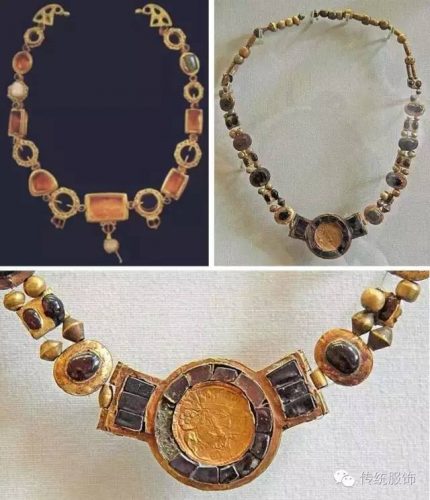
Top left part of a picture: 2nd-3th century necklace with gems from the shipwreck unearthed near Lesbos Island, now in the Mytilene Archaeological Museum, Greece.
Upper right and lower pictures: 6th-7th century gold necklace with garnets. Said to be unearthed in Iran Sassanid period, now in the Louvre, France.



Unearthed 1957 from the tomb of Li Jingxun, a nine years old girl. Jewelry was buried in the fourth year of Sui Daye (608 CE).
Now it is kept in the National Museum of China.
Li Jingxun was a granddaughter of the eldest sister of Emperor Yang of the Sui dynasty. More than 200 items were buried in her grave, among them pair of gem-studded gold bracelets and this rich necklace. [V. C. XIONG and E. J. LAING]
The necklace consists of 28 spherical ornaments with 10 pearls each. The elements are divided into two groups of 14 in each group. The balls are linked by a chain woven with gold wire. At the top of the two groups of golden ball chains, there is a square gold ornament (inlaid with red bloodstone). The carnelian is surrounded by 24 pearls. The left and right sides are connected to a square gold ornament with four inward curves, and blue bead ornaments are inlaid on it, and a heart-shaped blue bead ornament is hung on the bottom end.

Photo ©Dongmaiying

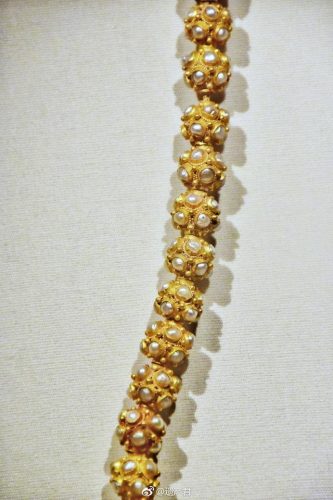
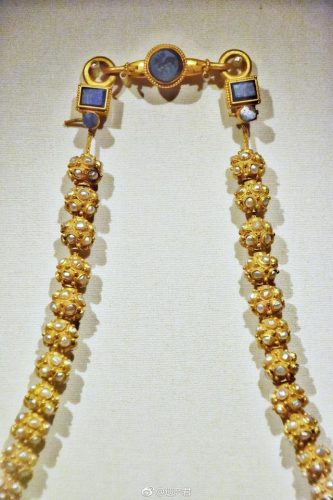
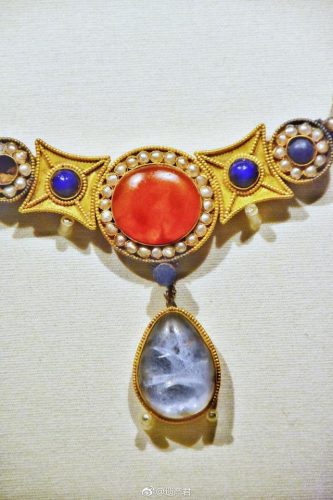
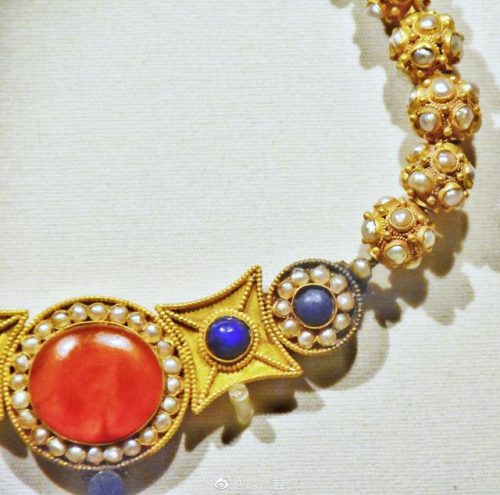
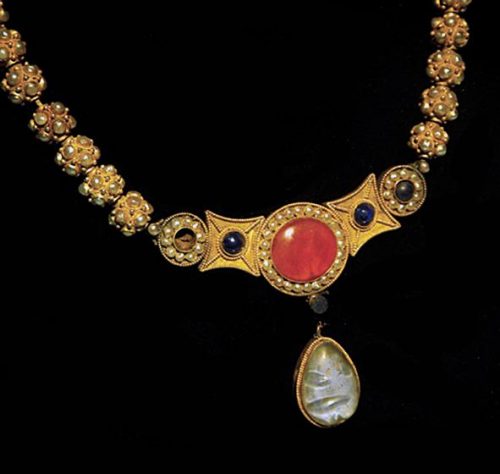
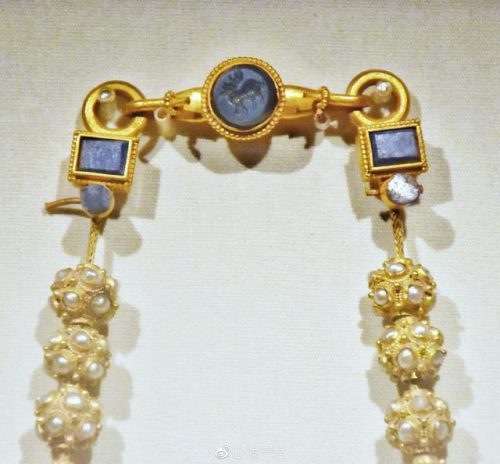
2. https://kknews.cc/other/5lg828k.html

- Foreign Jewelry in Ancient China, VICTOR CUNRUI XIONG and ELLEN JOHNSTON LAING, 1991 https://www.jstor.org/stable/24048294
